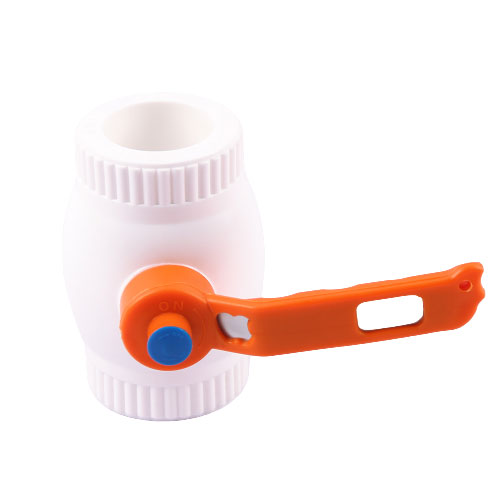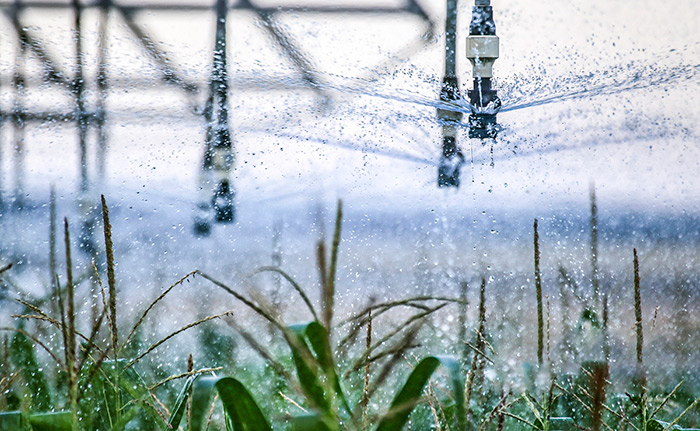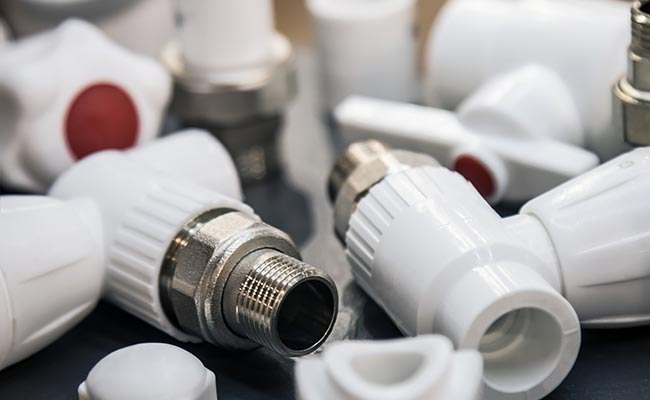
Plumbing repairs can feel overwhelming, but the white color PPR ball valve makes it easier. This innovative valve, crafted from durable Polypropylene Random Copolymer (PP-R), resists corrosion and scaling, offering a long-lasting solution. It works seamlessly in hot and cold water systems, ensuring reliable performance. Whether fixing leaks or upgrading pipelines, this valve proves practical and efficient.
Key Takeaways
- White PPR ball valves are strong and can last 50 years. This means you won’t need to replace them often.
- These valves don’t rust or build up deposits. They keep water clean and stop clogs in pipes.
- Putting in a PPR ball valve is easy. Get the right tools, prepare the pipes, and follow steps for a tight fit.
Benefits of Using White Color PPR Ball Valves

Durability and Long Service Life
The white color PPR ball valve stands out for its impressive durability. Made from high-quality Polypropylene Random Copolymer (PP-R), it can handle years of use without breaking down. This material resists wear and tear, even in demanding plumbing systems. Under normal conditions, the valve can last over 50 years, and in ideal situations, it may exceed 100 years. That means fewer replacements and less hassle for homeowners.
Tip: Choosing a durable valve like this one saves time and money in the long run.
Resistance to Corrosion and Scaling
Corrosion and scaling are common problems in plumbing systems. They can clog pipes and reduce water flow. The white color PPR ball valve solves this issue with its corrosion-resistant design. Unlike metal valves, it doesn’t rust or react with water. It also prevents scaling, keeping the water supply clean and efficient. This makes it a great choice for both hot and cold water systems.
Energy Efficiency and Cost Savings
The white color PPR ball valve is not just durable; it’s also energy-efficient. Its low thermal conductivity helps reduce heat loss in hot water systems. This feature lowers energy consumption, which can lead to smaller utility bills. Plus, its lightweight design makes installation easier, saving time and labor costs.
By combining efficiency with cost savings, this valve is an eco-friendly option for modern plumbing needs.
How to Install a White Color PPR Ball Valve
Tools and Materials Required
Before starting, gather all the necessary tools and materials. This ensures a smooth installation process without interruptions. Here’s what you’ll need:
- PPR pipes and fittings
- A pipe cutter for clean and precise cuts
- A fusion welding machine
- A pipe reamer to smooth pipe edges
- Measuring tape for accurate measurements
- Safety gear, including gloves and goggles
Having these items ready will save time and make the process more efficient.
Preparing the Plumbing System
Preparation is key to a successful installation. Start by shutting off the water supply to avoid leaks or spills. Next, inspect the existing plumbing system. Look for any damage or debris that might interfere with the installation. Clean the pipes and fittings thoroughly to remove dust or residue. This step ensures a secure and leak-free connection.
Tip: Mark the pipes where cuts are needed to avoid mistakes during the cutting process.
Step-by-Step Installation Process
Installing a white color PPR ball valve is straightforward when you follow these steps:
- Measure and Cut the Pipes
Use a measuring tape to determine the required pipe length. Mark the cutting points and use a pipe cutter for precise cuts. Inspect the pipe ends and smooth them with a reamer to remove sharp edges. - Prepare the Pipes and Fittings
Clean the surfaces of the pipes and fittings. Align them properly to ensure a snug fit during the welding process. - Fusion Welding Process
Heat the pipe and fitting surfaces using a fusion welding machine. Follow the manufacturer’s guidelines for the correct temperature and heating time. Quickly join the heated surfaces and hold them in place until they cool. This creates a strong, leak-proof bond. - Inspect and Test the Installation
Check the joints for any gaps or misalignments. Allow the connections to cool completely. Perform a pressure test by turning on the water supply and observing for leaks.
A Middle Eastern construction firm successfully reduced leak-related downtime by 40% using custom-sized PPR ball valves in a high-rise project. This highlights the importance of proper installation techniques.
Testing and Ensuring Proper Functionality
Once the installation is complete, testing is crucial. Turn on the water supply gradually and monitor the system for leaks or irregularities. Check the valve’s operation by opening and closing it several times. Ensure it moves smoothly without resistance.
If any issues arise, address them immediately. Tighten loose connections or repeat the welding process if necessary. Proper testing guarantees the white color PPR ball valve will function reliably for years to come.
Note: Regular maintenance, such as cleaning and inspection, can extend the valve’s lifespan and improve performance.
Common Plumbing Problems Solved by White Color PPR Ball Valves
Fixing Leaks and Drips
Leaks and drips are among the most frustrating plumbing issues homeowners face. They waste water, increase utility bills, and can lead to structural damage if left unchecked. The white color PPR ball valve offers a reliable solution to these problems. Its corrosion-resistant design ensures that water flows smoothly without causing wear and tear on the valve.
Replacing a leaking valve with a PPR ball valve is straightforward. Its lightweight construction makes handling easy, while its fusion welding capability guarantees a secure, leak-proof connection. Once installed, the valve’s durable material prevents future leaks, saving homeowners time and money.
Tip: Regularly inspect plumbing systems for signs of leaks. Early detection and replacement with a PPR ball valve can prevent costly repairs.
Controlling Water Flow in Residential Systems
Efficient water flow control is essential for maintaining a functional plumbing system. The white color PPR ball valve excels in this area, thanks to its smooth interior surface and precise design. It allows users to regulate water flow with ease, whether they need to shut off water during repairs or adjust pressure for specific fixtures.
Here’s a breakdown of the valve’s technical benefits:
| Property/Benefit | Description |
|---|---|
| High Water Flows | Smooth interior surface allows for efficient flow control. |
| Low Thermal Conductivity | Provides superior heat insulation, conserving energy. |
| Excellent Chemical Resistance | Safe for drinking water applications due to strong chemical resistance. |
| Long Life | Designed to last over 50 years, ensuring durability. |
| Easy Installation | Requires less time and effort for installation. |
| Corrosion Resistance | Higher degree of resistance to corrosion compared to other materials. |
| Abrasion Resistance | High resistance to wear from hard particles. |
| Energy Saving | Contributes to overall energy conservation in plumbing systems. |
These features make the PPR ball valve a practical choice for residential systems. Its ability to handle both hot and cold water pipelines ensures consistent performance across various applications.
Replacing Old or Faulty Valves
Old or faulty valves can disrupt water flow and compromise the efficiency of a plumbing system. Replacing them with a white color PPR ball valve is a smart upgrade. The valve’s long lifespan and resistance to scaling make it a superior alternative to traditional metal valves.
The installation process is quick and hassle-free. Its fusion welding capability ensures strong joints that won’t weaken over time. Once installed, the valve enhances the overall reliability of the plumbing system, reducing the need for frequent maintenance.
Note: Upgrading to PPR ball valves not only improves system performance but also contributes to energy savings, thanks to their low thermal conductivity.
Maintenance Tips for White Color PPR Ball Valves
Regular Cleaning and Inspection
Keeping the valve clean ensures it works efficiently. Dust, debris, or mineral buildup can affect its performance over time. To clean it, turn off the water supply and remove the valve if necessary. Use a soft cloth or sponge with mild soap to wipe away dirt. Avoid harsh chemicals that might damage the material.
Inspection is equally important. Check the valve for cracks, leaks, or signs of wear. Pay attention to the joints and connections. If you notice any issues, address them promptly to prevent bigger problems. Regular cleaning and inspection can extend the valve’s lifespan and maintain its reliability.
Tip: Schedule inspections every six months to catch potential issues early.
Preventing Damage from Extreme Temperatures
Extreme temperatures can harm plumbing systems. The valve’s durable material resists heat and cold, but taking precautions adds extra protection. For hot water systems, ensure the temperature doesn’t exceed the valve’s maximum working limit of 95°C. In colder climates, insulate exposed pipes to prevent freezing.
Sudden temperature changes can also stress the valve. Gradually adjust water temperatures instead of making abrupt changes. These small steps help maintain the valve’s integrity and prevent unnecessary damage.
Replacing Worn-Out Components
Even the best valves may need occasional repairs. Over time, components like seals or gaskets can wear out. Replacing these parts is simple and cost-effective. Start by shutting off the water supply and disassembling the valve. Replace the worn part with a compatible one, then reassemble and test the valve.
If the valve itself shows significant wear, consider replacing it entirely. A new valve ensures optimal performance and prevents future issues. Regular maintenance reduces the need for frequent replacements, saving time and money.
Note: Always use original parts for replacements to maintain quality and compatibility.
The white color PPR ball valve offers unmatched durability, energy efficiency, and ease of installation. It simplifies plumbing repairs and boosts system reliability, making it a smart choice for homeowners and professionals alike. Whether upgrading old valves or tackling leaks, this valve delivers long-term value. Consider it for your next plumbing project—it’s a decision you won’t regret!
FAQ
What makes the white color PPR ball valve better than metal valves?
The PPR ball valve resists corrosion, lasts longer, and is lightweight. It’s also non-toxic, making it safe for drinking water systems.
Can I install a PPR ball valve without professional help?
Yes! With basic tools and a fusion welding machine, most homeowners can install it. Follow the step-by-step guide for best results.
Is the PPR ball valve eco-friendly?
Absolutely! It’s recyclable and reduces energy loss due to its low thermal conductivity. This makes it a sustainable choice for modern plumbing systems.
Tip: Always check the manufacturer’s guidelines for proper installation and maintenance.
Post time: Jun-09-2025




